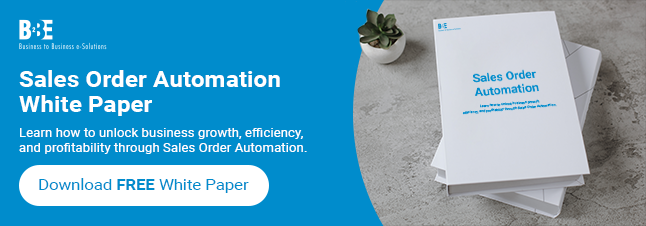In this article, we answer the question “what is sales order automation?” and other common FAQs you might find useful to gain a better understanding of the solution and how it can benefit your business and improve efficiency.
Introduction
Managing sales orders manually can be time-consuming and prone to errors, especially as businesses grow. A sales order automation solution simplifies and streamlines this process, improving accuracy and efficiency and allowing your team to focus on what truly matters—building strong customer relationships and driving growth.
What Is Sales Order Automation?
Sales order automation involves using software to automatically process orders from when they’re received to fulfilment. It eliminates manual data entry, speeds up the order lifecycle, and reduces the chance of human error.
Watch our video round-up below:
What Are The Key Benefits of Sales Order Automation?
- Increased Efficiency: Automation drastically cuts down processing time, enabling faster order fulfilment.
- Improved Accuracy: Reduces data entry errors, ensuring accurate order details and timely shipping.
- Enhanced Customer Experience: Faster order processing and fewer errors lead to happier customers and stronger relationships.
- Reduced Costs: Automation cuts down on operational costs associated with manual entry, allowing resources to be redirected to higher-value tasks.
What Are The Key Features to Look for in Sales Order Automation Software?
- Nahtlose Integration: Choose a solution that integrates easily with your existing ERP or CRM systems.
- Real-Time Updates: Real-time data synchronisation ensures you’re always aware of order status.
- Customisable Workflows: Allows businesses to tailor processes based on specific needs, such as order prioritisation or discount handling.
- Error Reduction Mechanisms: Automation solutions should provide verification and validation tools to catch inconsistencies early.
What Are The Steps for Implementing Sales Order Automation?
- Assess Your Current Order Management Process: Identify areas where manual entry causes bottlenecks or errors.
- Choose the Right Software: Evaluate software options that integrate well with your current systems and meet your specific business needs.
- Train Your Team: Ensure your team understands the new system to make the transition as smooth as possible.
- Monitor and Optimise: Regularly review system performance to make adjustments and leverage data insights for process improvements.
Conclusion
Sales order automation is a game-changer for businesses looking to improve efficiency, accuracy, and customer satisfaction. By eliminating manual data entry and optimising the order process, companies can reduce costs and allocate resources more effectively—ultimately positioning themselves for growth in a competitive market.
Learn more about B2BE’s Sales Order Automation solution.
About B2BE
B2BE delivers electronic supply chain solutions globally, helping organisations to better manage their supply chain processes, providing greater levels of visibility, auditability and control. We’re driven by a passion for what we do, inspired by innovation, and underpinned by a wealth of knowledge. With over 20+ years of experience, the B2BE teams operate worldwide.
For more information, visit www.b2be.com.

